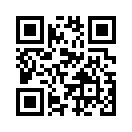
Boing Boing talks about QR Codes - the latest and hottest fad among mobile users in Japan. While machine readable languages have been here since the beginning of computing, this is the first time that they are also a statement of “art”. QR codes are graphical equivalent of any text that you want, something similar to barcodes in purpose. But while barcodes were one dimensional (vertical lines of variable thickness), QR codes are two dimensional - (like the image on the right).Mobile phones with cameras are being equipped with image recognition software to interpret these images. Boing Boing mentions that people are using QR codes to mention their contact information, URLs, email addresses, etc.
The image to the right of this post is the QR code for “Ghosts in my mind”. Check out this page at NFG Games to create your own QR codes.
So if you have a statement to make to the world, write in in QR, print it on your T-shirt, and let only the chosen few to get your golden words.
QR codes are a creation of Denso Wave. The Denso Wave QR code documentation mentions:
While conventional bar codes are capable of storing a maximum of approximately 20 digits, QR Code is capable of handling several dozen to several hundred times more information.
QR Code is capable of handling all types of data, such as numeric and alphabetic characters, Kanji, Kana, Hiragana, symbols, binary, and control codes. Up to 7,089 characters can be encoded in one symbol.
QR Code specification is quite open enough. It is now an ISO (ISO/IEC18004) standard. This Denso Wave page mentions that
QR Code is open in the sense that the specification of QR Code is disclosed and that the patent right owned by Denso Wave is not exercised.
Like all ISO standards, (unlike W3C or IETF ones), unfortunately this also means that you have to buy a subscription to read the standards. But atleast, the fact that it is available to the public in some form is better than having a restrictive patent.
![[FSF Associate Member] [FSF Associate Member]](/images/fsf-371257.png)
![[PSF Supporting Member] [PSF Supporting Member]](/images/psf-supporting-member-badge-small.png)